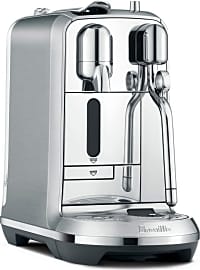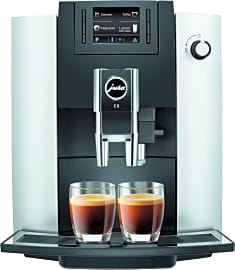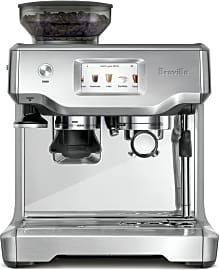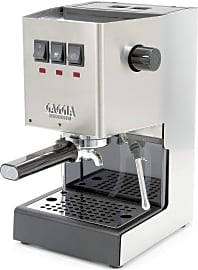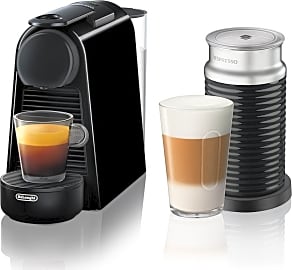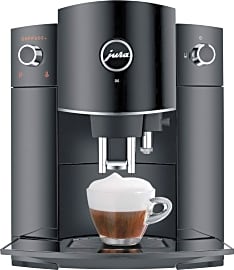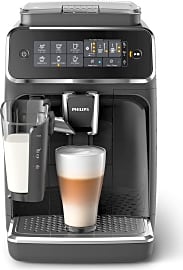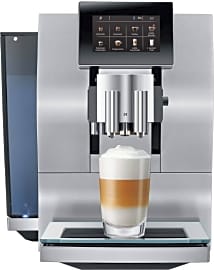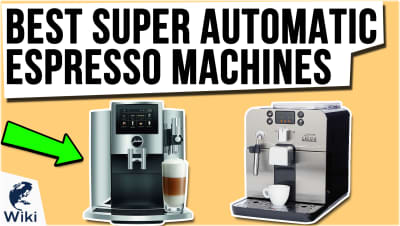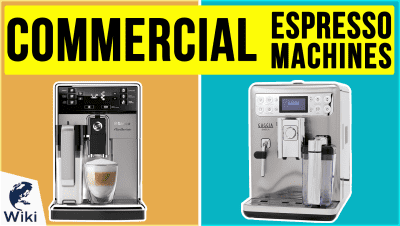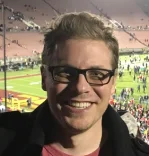The 10 Best Espresso Machines

This wiki has been updated 41 times since it was first published in February of 2015. Stopping by a high-end coffee shop every morning for a latte can get costly, not to mention time-consuming. Skip the lines and the expense with one of these espresso makers. We've included both premium and budget models, so you can find the best machine for your needs. Now you can enjoy a high-quality cappuccino in the comfort of your own kitchen whenever you get a craving. When users buy our independently chosen editorial recommendations, we may earn commissions to help fund the Wiki.
Editor's Notes
December 11, 2020:
These machines were evaluated with a bias toward home use, as that's where most customers will be using them, hence why the Jura Z8 Automatic, which is a great machine with a lot of capability, is down at number 10, because it's simply too expensive and bulky for most homes. On the other end of the spectrum, the Philips 3200 Series and Gaggia Classic Pro are rather compact, making them solid choices for a kitchen.
Pods are not everyone's choice for a variety of reasons, but there's no denying that Nespresso produces the best. The Nespresso Creatista is the top capsule machine because of its frother, but the Nespresso by De'Longhi and Nespresso Essenza Mini are both solid and inexpensive choices.
When it comes to using fresh beans, the choice is between machines that allow you to craft the most flavorful espresso and those that can make the widest variety of drinks for you. The Jura E6 Platinum and Jura D6 add milk automatically, perfect for those who don't want a lot of fuss. But the Breville Barista Touch offers more control, and the Breville Barista Express, in the top spot, provides everything you need to recreate the coffee shop experience in your own home.
November 13, 2019:
While this isn't a category that sees a lot of overhaul from one year to the next, we did think it was important to include a few better super automatic models than the previous list had. The important thing about these is that they take absolutely every step out of the brewing process, save loading the hopper with beans whenever it runs out and keeping water and milk tanks full. Jura is easily one of the top names in these types of brewers and both the Jura Impressa XS90 One Touch and the Jura ENA 1 Automatic are prime examples of the simplicity these models offer. The ENA 1 is more of a purist's machine, however, as it doesn't include any means for preparing milk, so a separate frother would be necessary for certain drinks.
To make room for these models, we said goodbye to a super automatic model by Saeco, which had a number of built quality issues affecting its durability. We also sent the Wacaco Company MiniPresso packing. It's a fine machine for portable use, and very innovative in its pressurization system, but ultimately it's too complicated to clean anywhere but in a controlled kitchen environment, both limiting its portability and potentially frustrating users.
Special Honors
Terra Kaffe TK-01 This is a forward thinking super automatic model that aims to be as user-friendly as possible. Its touchscreen menu system allows you to choose from a handful of popular drink types, and to customize them before brewing begins. It's available in either black or white to better match the color scheme of your kitchen. terrakaffe.com
Slayer Single Group If money is no object, then Slayer is the maker you're after. Suitable for high-end coffee shops, it provides a level of precision and consistency unrivaled by most competitors. The company offers a wealth of personalization options to ensure you get the machine of your dreams. slayerespresso.com
Common Misconceptions About Espresso
Now let's tackle two other common misconceptions about espresso: the definition and the pronunciation.
You may think espresso started as an Italian achievement, but a French guy invented the first machine in 1822. Admittedly though, it wasn't much longer before the Italians took it over and made the espresso machine a real work of art.
The Italian with the first patent for an automatic espresso machine went on to found the Illy Caffe company in 1933. On its website the company defines authentic espresso as a, "pure sensorial pleasure." It doesn't get much better than that, people.
Now let's tackle two other common misconceptions about espresso: the definition and the pronunciation.
Espresso is defined as: 1. a method of coffee preparation whereby water is forced through coffee grounds with great pressure. 2. a cup of coffee prepared by forcing water through coffee grounds with great pressure.
So you see, the term "espresso" does not refer to the texture of the grind; nor is it a type of roast. Now that you have this bit of information under your cap, you can begin to build a little coffee snobbery of your own.
As for pronunciation: that's another thing that many rookies get wrong, especially those with no experience with romance languages (we are not judging here). Definitively, there is no "X" in espresso; not real nor implied. I promise I will explain the origin of the word a little later. Till then, don't fall into the trap.
Drop the "X." Pronouncing it right won't make you sound smart, but pronouncing it wrong might make you sound a little stupid. Just sayin'.
A Little Espresso History For You
As legend has it, Ethiopian goats were the first to discover the delightful properties of coffee beans when they ate the raw beans right off the stem. The goats nibbled happily away at the beans, probably right around 2 o'clock every afternoon, until finally an astute goat herder noticed the goats' perky behavior, gave the beans a taste, found them quite stimulating, and rushed them off to the nearest monastery.
The monks thought the goat herder was a fool, and told him as much by throwing the beans in the fire. Sigh. Well, soon the enticing aroma of fresh roasted coffee was too much to ignore. The monks henceforth reversed their snubbing of coffee beans, scooped them out of the fire and threw them into some hot water. Then they drank the dark brew. Ta-da! The first cup of coffee! That was back in the year 850 C.E.
For the first time in the entire history of coffee, finally, in 1906, people could enjoy coffee made expressly for them: espresso.
From there, coffee has continued to enjoy a storied and well-documented history. But we will confine our discourse to espresso, which came about many years into coffee's journey through the millennia.
Skip now to the year 1906. Milan held a World's Fair they called, "L'Esposizione Internazionale del Sempione." At the Piazza d'Armi, Luigi Bezzera and Desidero Pavoni unveiled the first working coffee machine to brew a single cup. They served "cafeé espresso" to the visitors on a wide countertop; the baristas dressed in black jackets and bow ties.
For the first time in the entire history of coffee, finally, in 1906, people could enjoy coffee made expressly for them: espresso. (I told you I would get back to this). And, while rumor has it the first espresso tasted pretty bad - watery and bitter, they say - the Italians stuck with it, perfecting it, marketing it, teaching people how to enjoy it.
Espresso didn't become the lovely bevvie it is today until after WWII, when a cafe owner named Achille Gaggia invented the lever-driven machine. Not to get too technical or anything, but the result was a consistent one-ounce shot of espresso with crema on top.
A whiz at marketing, Gaggia managed to convince the public that this was not coffee scum produced by his invention, as they originally suspected; it was, rather, coffee cream. Now it's the standard. Baristas believe that the richness of your crema indicates the freshness of your beans.
Everybody's Doing It: The Four M's of Espresso
Here we are now; ready to be a home barista?
Let's take a moment to review the four M's of espresso. These are all Italian words that you will understand easily.
And if you memorize them, you can whip out these expert terms while you're pulling the perfect shot for your guests.
Here's where we came in, what with you shopping for an espresso machine and all.
First comes, miscela, or mixture. This refers to the blend of beans. You want to use the high quality sh*t here; no store brand foolery allowed.
Second: Macinazione, or the grind. A fresh grind is uber-important. A true coffee aficionado wouldn't dream of using grounds that are more than 30 seconds old. The grind texture should be somewhere between fine and powder.
Third: Macchina, or machine. Here's where we came in, what with you shopping for an espresso machine and all. Hope we've helped.
And fourth: Mano, literally hand, or your barista skills. You've got the miscela di destra (the right beans), the macianzione perfetto (the perfect grind), an awesome nuova macchina (new machine). Now it's time to show us your mano di talento (talented hand).
Nowadays, you can even get group or private barista lessons, just to show off, to enjoy an artful cup of coffee at home, or because you want a new or second career. Don't knock it. Did you see Mike Jones handling that foam?
Addio ora.


